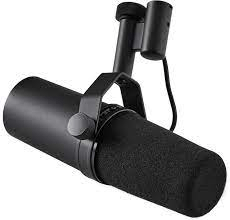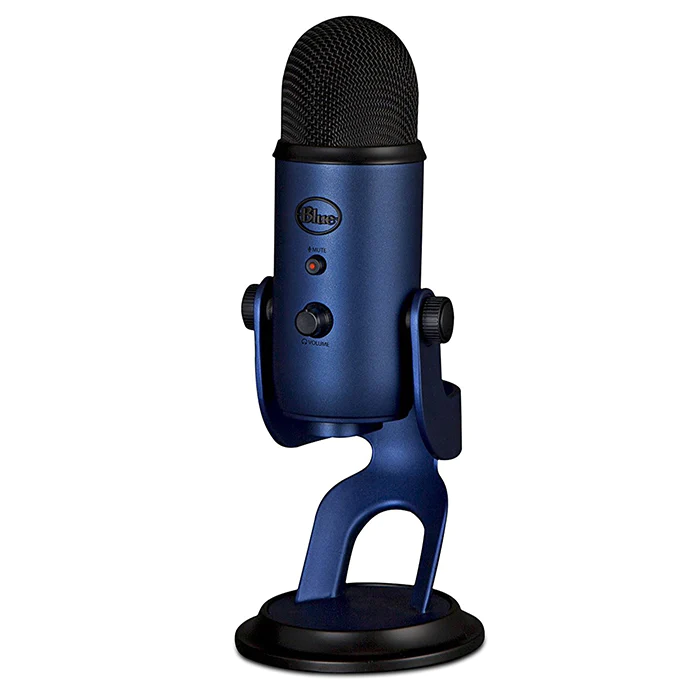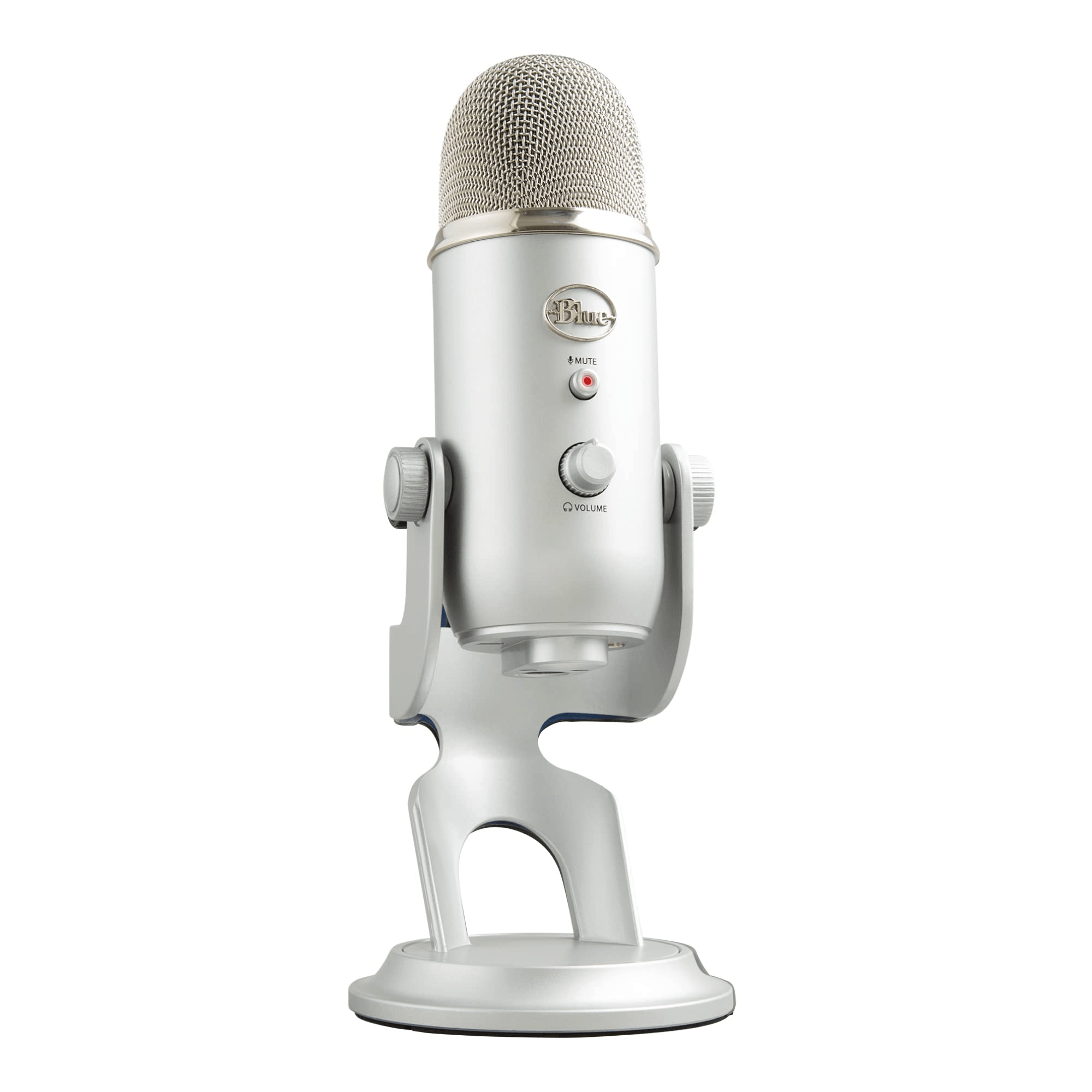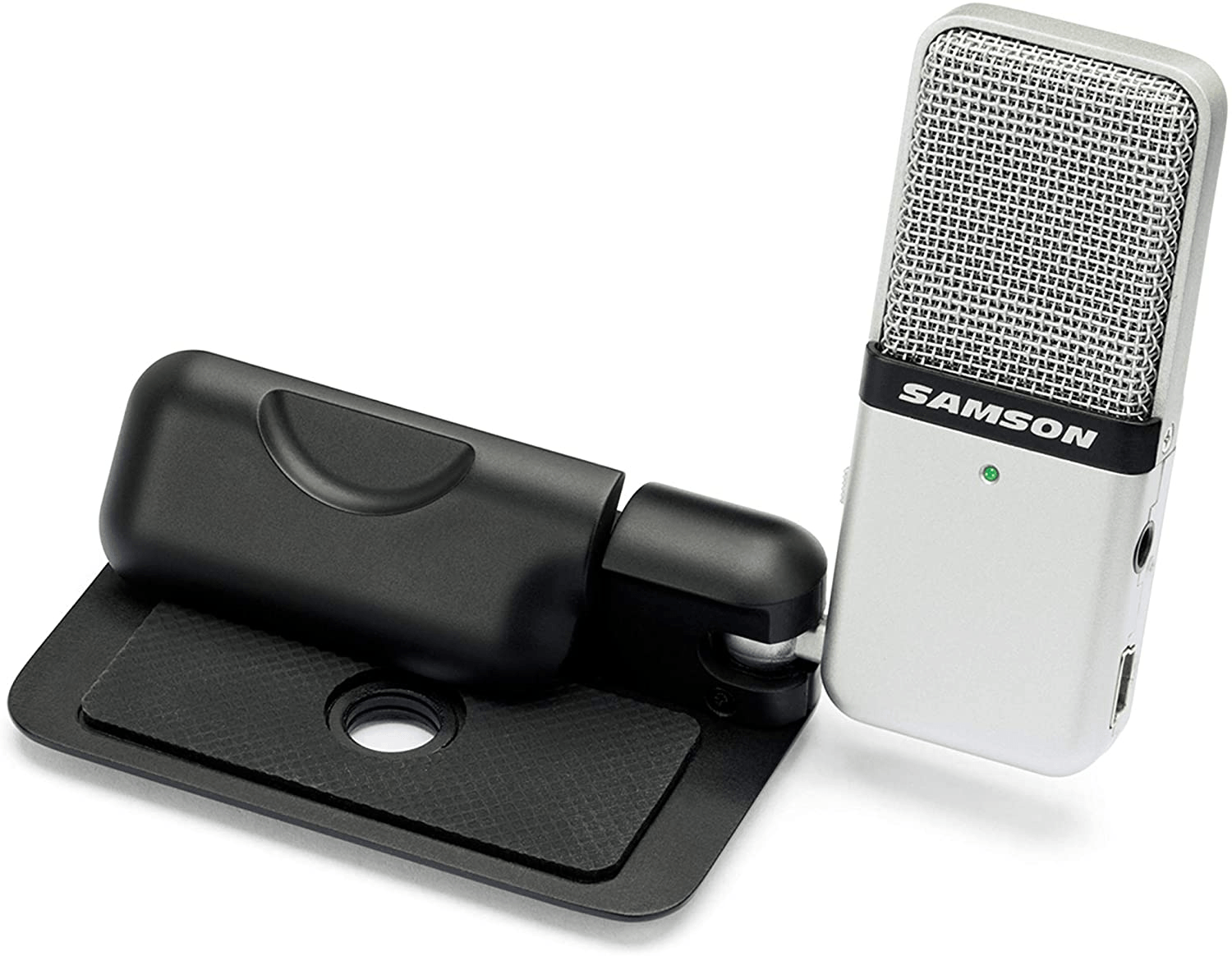Are you ready to elevate your dictation game to the next level? A high-quality computer microphone is essential for capturing clear and precise speech, whether you’re dictating documents, commanding your virtual assistant, or preparing for a speech-to-text marathon. But with so many options out there, choosing the perfect mic can feel overwhelming. That’s where we come in! Our listicle zeroes in on the best computer microphones tailored for dictation, ensuring you get a hassle-free, accurate transcription experience every time. Let’s dive into the world of crystal-clear audio and find the mic that’ll make your words fly off the page!
When selecting the best computer microphone for dictation, it’s important to focus on several key criteria to ensure clear and accurate voice capture, which can significantly enhance dictation software’s performance. Here are some criteria to consider:
- Audio Quality: The microphone should provide crisp and clear audio capture, reducing background noise and avoiding distortion. This is crucial for dictation software to accurately transcribe your words.
- Sensitivity and Range: It should be sensitive enough to pick up your voice without having to speak loudly, but also able to filter out unnecessary sounds that are not part of the dictation.
- Connectivity: Whether it connects via USB, Bluetooth, or analog (3.5mm), the microphone needs to be compatible with your computer and easy to set up.
- Form Factor and Mounting: Depending on your workspace, you may prefer a desktop microphone, a lavalier that clips to your clothing, or a headset. Look for a design that suits your dictation style.
- User-Friendly Features: Additional features such as mute buttons, LED indicators, or software compatibility with dictation programs can enhance the user experience.
- Price: Find a microphone that offers the best balance between cost and the features you need for efficient dictation.
By carefully evaluating these criteria, you can find an optimal microphone for your dictation needs that delivers accuracy and ease of use.
| Feature / Product | Blue Yeti USB | Shure MV5 | Audio-Technica AT2020USB+ | Rode NT-USB | Philips SpeechMike Premium Air |
|---|---|---|---|---|---|
| Price Range* | $$ | $$ | $$$ | $$$ | $$$$ |
| Type of Microphone | Condenser | Condenser | Condenser | Condenser | Condenser |
| Polar Patterns | Cardioid, Bidirectional, Omnidirectional, Stereo | Cardioid | Cardioid | Cardioid | Cardioid |
| Connectivity | USB | USB | USB | USB | Wireless (Bluetooth) |
| Frequency Response | 20Hz – 20kHz | 20Hz – 20kHz | 20Hz – 20kHz | 20Hz – 20kHz | 100Hz – 7.5kHz |
| Sample Rate | 48 kHz | 48 kHz | 44.1/48 kHz | 48 kHz | N/A (wireless) |
| Bit Depth | 16-bit | 16-bit or 24-bit** | 16-bit | 16-bit | N/A (wireless) |
| Additional Features | Mute button, volume control, gain control, zero-latency headphone output | DSP preset modes, headphone output | Mix control, headphone jack | Direct mix control, headphone jack, zero-latency monitoring | Push-button function, trackball, integrated pop filter |
| Suitability for Dictation | Good | Good | Very Good | Very Good | Excellent (specifically designed) |
- Price Range Key: $ – under $50, $$ – $50 to $100, $$$ – $100 to $200, $$$$ – above $200
** The Shure MV5 offers a higher bit depth in certain modes/applications.
Please note that while this table provides a brief comparison, it’s important to consider what your specific needs are when choosing a microphone for dictation. For example, the Philips SpeechMike Premium Air is specifically designed for dictation, which might make its features more tailored to your use-case compared to the others, which are general-purpose microphones that can be used very effectively for dictation.
When doing dictation, sound clarity, noise rejection, and ease of use are likely your main concerns. Some of these microphones might offer additional features such as different recording patterns, which are good for other types of recording situations but might not be necessary for dictation. It’s also worth considering if a wireless option like the Philips SpeechMike might offer more convenience compared to traditional wired USB microphones.
Blue Yeti USB Microphone
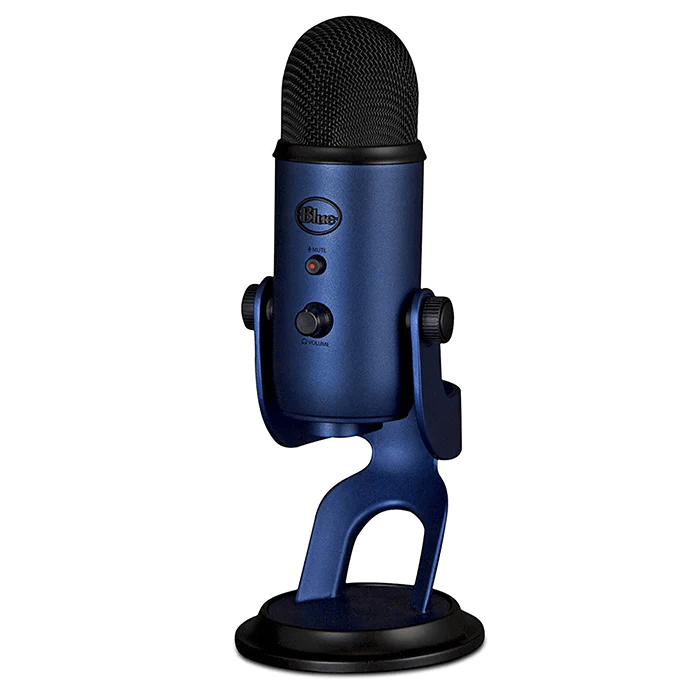
Overview:
The Blue Yeti USB Microphone is a popular choice among podcasters, streamers, and professionals who rely on clear audio for dictation tasks. My experience with the Blue Yeti has been impressive due to its excellent sound quality and versatility. With its sturdy build and retro aesthetic, it adds professionalism to any desk setup.
The microphone’s plug-and-play functionality means you can connect it to your PC or Mac without the need for additional drivers. The stand-out feature for me has to be the multi-pattern selection; you can switch between cardioid, bidirectional, omnidirectional, and stereo pickup patterns—this flexibility makes it a great fit for virtually any recording scenario, beyond just dictation. For capturing voice, the cardioid mode is ideal, as it focuses on sound sources directly in front of the microphone and reduces background noise.
Specs:
- Multiple pattern selection: Cardioid, Bidirectional, Omnidirectional, Stereo
- Frequency response: 20Hz – 20kHz
- Sample rate: 48 kHz
- Bit rate: 16-bit
- Built-in headphone jack for real-time monitoring
Pros:
- Exceptional audio quality that provides crisp and clear recordings—vital for accurate dictation.
- The ability to switch between different pickup patterns gives the Blue Yeti a versatile edge.
- Includes a zero-latency headphone jack, allowing you to hear exactly what you’re recording in real time without delay. This is crucial for ensuring your dictation is captured correctly.
- The built-in control knobs for volume, pattern selection, and mute are intuitive and easy to use.
Cons:
- The Blue Yeti is quite large and heavy, which might not be ideal for those with limited desk space or who require a portable microphone.
- Although the build is solid, the microphone can be somewhat top-heavy and may require careful positioning to prevent tipping.
- At higher gain settings, it can pick up background noise, which could interfere with dictation if you’re in a noisy environment.
Price:
The price of the Blue Yeti USB Microphone typically ranges from $100 to $130 depending on the color and specific retailer. While it may not be the cheapest option available, the features and quality justify the price point, making it a worthy investment for any professional looking to enhance their dictation process.
In my opinion, the Blue Yeti stands out as a reliable and high-performing microphone that can significantly elevate the quality of your dictation. Its drawbacks are minor in comparison to its robust features and exceptional audio clarity. For those serious about dictation accuracy and looking for a mic that excels in versatility, the Blue Yeti is a strong contender.
Shure MV5 Digital Condenser Microphone

Overview
The Shure MV5 strikes a remarkable balance between quality, portability, and usability. Its modern design is certainly an eye-catcher, resembling a classic studio microphone, yet it encapsulates the future with its digital prowess. It is particularly adept for dictation, capturing clear and detailed voice recordings without the fluff – no huffing, no puffing, just your words as they are intended to be heard.
The MV5 connects effortlessly to both computers and mobile devices via USB or Lightning port, making it a versatile companion for dictation whether you’re at your desk or on the go. Additionally, the microphone comes with various preset modes, and the one tailored for voice is exceptional for dictation tasks, as it enhances vocal clarity and reduces background noise.
Specs
- Microphone Type: Digital condenser
- Polar Pattern: Cardioid
- Connectivity: USB, Lightning
- Frequency Response: 20 Hz to 20 kHz
- Resolution: Up to 24-bit/48kHz
- Built-in Headphone Jack for real-time monitoring
- DSP Preset Modes: Voice, Instrument, Flat
- Included Accessories: USB and Lightning cables, Desktop stand
- Compatibility: iOS devices, Mac, and PC
Pros:
- Portable and easy to set up, perfect for users who require a travel-friendly dictation solution.
- The voice preset mode is excellent, tuning the microphone for an optimal dictation experience.
- Plug-and-play compatibility with multiple platforms adds to its convenience.
- The build quality feels sturdy for a microphone in its class.
Cons:
- The desktop stand, while sleek, doesn’t provide the same stability as a full-sized mic stand and could be an issue if you’re typing vehemently or have an unsteady work surface.
- Although the sound quality is solid, audio purists or professionals might seek higher quality found in more expensive microphones.
- The omission of a pop filter means you’ll need to speak carefully to avoid plosives or purchase a separate filter.
Price
The Shure MV5 sits comfortably in the mid-tier price range at around $99. This pricing places it squarely in the ‘good value for money’ category, considering its features and performance tailored towards voice work.
Personal Opinion: The Shure MV5 is a practical choice for users who need to dictate documents regularly and look for a microphone that’s a breeze to use. What I love about this mic is the clarity it brings to the table, which for dictation purposes, is the cornerstone of productivity. Its unobtrusive design also means it won’t clutter your workspace. While it may not dazzle audiophiles, for the everyday user who values efficiency and clarity, the MV5 is a shrewd investment.
Audio-Technica AT2020USB+

Overview:
The Audio-Technica AT2020USB+ stands out as a versatile and reliable microphone, known for its studio-quality articulation and intelligibility. Perfect for dictation, it offers crisp and clear recording quality that captures the subtleties of the human voice brilliantly. This microphone is a favorite among podcasters, voice-over artists, and now, individuals looking for superior dictation capability. Its plug-and-play simplicity means you can get started without fuss, and the sound quality it delivers is consistent and dependable. Having used the AT2020USB+ personally for voice recording, I’m continually impressed by how it balances clarity and warmth, ensuring that spoken words are both comprehensible and pleasant to listen to.
Specs:
- Condenser microphone with USB output for digital recording
- High-quality A/D converter with 16 bit, 44.1/48 kHz sampling rate
- Mix control allows blending your microphone signal with pre-recorded audio
- High-output internal headphone amplifier delivers superior clarity
- Cardioid polar pattern reduces pickup of unwanted sounds from the sides and rear
Pros & Cons:
Pros:
- Exceptional sound clarity, making each word spoken crisp and easily understandable.
- The USB interface simplifies the setup, eliminating the need for external audio interfaces or preamps.
- It comes with a sturdy tripod desk stand, which is convenient for dictation at a desk or workstation.
- Zero-latency monitoring through the built-in headphone jack is a standout feature, allowing for real-time playback without delay.
Cons:
- The AT2020USB+ lacks physical gain controls on the microphone itself, which some users may prefer for on-the-fly adjustments.
- While the tripod stand is useful, the microphone could benefit from more robust shock absorption to counteract desk vibrations during typing or other movements.
Price:
The Audio-Technica AT2020USB+ typically retails for around $149. This places it in the mid-range price bracket, offering professional features without being prohibitively expensive. For anyone serious about dictation accuracy and quality, this microphone represents a sensible investment given its performance.
In my opinion, the Audio-Technica AT2020USB+ hits the sweet spot for dictation microphones. It combines studio-grade sound fidelity with the ease of use, making it an excellent choice for anyone who wants to ensure their spoken words are captured with utmost clarity. I’ve found that it performs exceptionally for prolonged sessions, keeping voice fatigue at bay thanks to its natural sound reproduction. Whether you’re dictating for business communication, transcription work, or crafting digital content, the AT2020USB+ is a valuable ally in achieving a professional sound.
Rode NT-USB Microphone
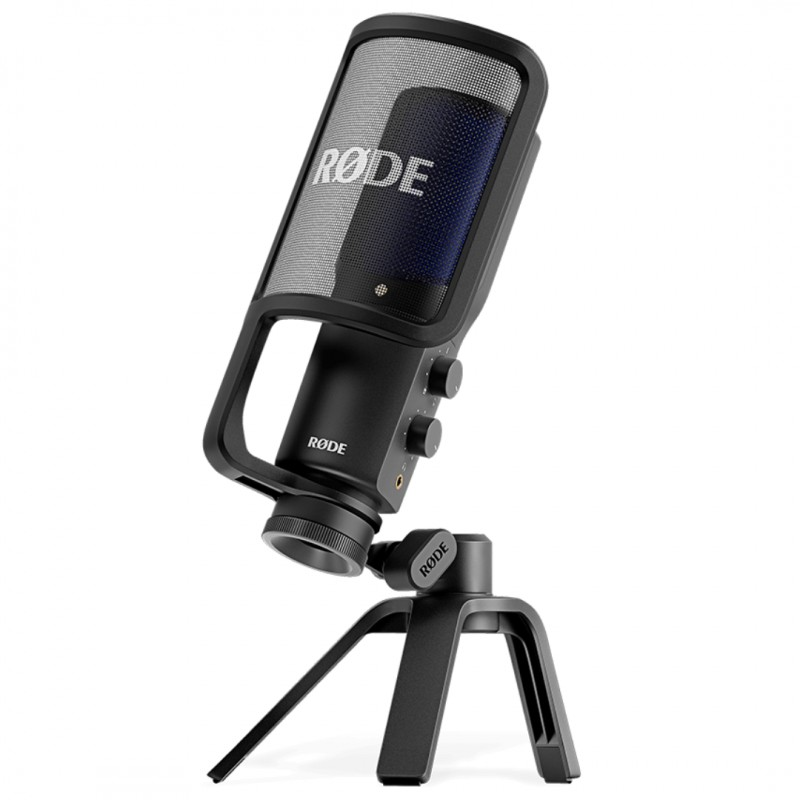
Overview
The Rode NT-USB is a versatile, high-quality microphone suitable for a variety of recording tasks, with dictation being one where it excels. Its sleek design and ease of use make it an outstanding choice for users looking for plug-and-play functionality without sacrificing sound quality. The microphone provides a warm, clear, and crisp audio output, ensuring your spoken words are captured with impressive clarity. This is particularly important in dictation where every syllable could affect the accuracy of speech-to-text results.
One standout feature is its integrated pop filter, which eliminates pesky plosives (those ‘p’ and ‘b’ sounds that can produce a pop in audio recordings) and ensures that your dictation is smooth and uninterrupted. Furthermore, its consistency in capturing sound from directly in front makes it focused and superb for a task like dictation where background noise needs to be minimized.
Specs
- Acoustic Principle: Pressure Gradient
- Active Electronics: JFET impedance converter with bipolar output buffer, A/D converter 16bit 48kHz
- Polar Pattern: Cardioid
- Frequency Range: 20Hz – 20kHz
- Maximum SPL: 110dB SPL (@ 1kHz, 1% THD into 1KΩ load)
- Power Options: USB powered
- Output: USB Output
- Computer Connectivity: USB – simultaneous I/O Mono input, stereo output
- OS Requirements: macOS 10.10 or later, Windows 7 or later
Pros:
- Exceptional sound quality, perfect for professional dictation.
- The integrated pop shield is a game-changer for clear audio without unwanted sounds.
- Zero-latency stereo headphone monitoring is a boon, allowing you to hear exactly what you’re recording in real-time without delay.
- It’s compatible with both Windows and macOS and works straight out of the box.
- The build quality is robust, ensuring that this microphone will last you many recording sessions.
Cons:
- Lacks multiple polar patterns which other models may offer, limiting its versatility in different recording scenarios.
- Some users might find the microphone a bit on the heavier side, although that speaks to its solid construction.
- It is more geared for desktop use and not as portable as other microphones available in the market.
Price
As for the price, the Rode NT-USB slots in at the mid-to-upper range of USB microphones designed for dictation tasks. Although prices vary, you can typically find the NT-USB at around $160 to $200. It’s not the cheapest out there, but for the quality, durability, and reliability you get, I find it to be a sound investment, especially if dictation is a significant part of your workflow.
Philips SpeechMike Premium Air Wireless Dictation Microphone

Overview:
The Philips SpeechMike Premium Air is a step above the rest when it comes to a microphone designed specifically for dictation. Its sleek and user-friendly design is immediately noticeable, as is the clear emphasis on ease of use for professionals who need to dictate regularly, such as lawyers or doctors. The device feels sturdy in hand, and you can tell that Philips has put a lot of thought into the ergonomics and functionality of the SpeechMike.
What sets it apart for me is the fact that it’s designed for speech recognition. The precision of the microphone is truly impressive. It picks up every nuance of speech without capturing unnecessary background noise, which is crucial for accurate dictation. The wireless functionality is a massive plus as well, giving you the freedom to move around your workspace without being tethered to your computer. The docking station is not only for charging but also acts as a wireless receiver, which is a clever touch.
Specs:
- Connectivity: 2.4 GHz wireless connection
- Battery Life: Up to 24 hours
- Charging: Docking station
- Recording Quality: Studio-quality
- Design: Ergonomic with integrated motion sensor
- Controls: Customizable buttons and a touch sensor for integrated mouse function
Pros:
- The freedom of wireless use without any noticeable lag or compromise in sound quality is a game-changer.
- Exceptional recording clarity that rivals dedicated studio mics, without overcomplicating the process for the user.
- The build quality screams premium, and the ergonomic design means it’s comfortable to use for long periods.
- The customizable buttons and integrated mouse functions are incredibly intuitive and boost productivity by keeping all necessary controls at your fingertips.
- The long battery life is a huge advantage, ensuring that you’re rarely caught off guard having to charge the device in the middle of a task.
Cons:
- While the product is nearly flawless for dictation, the premium qualities come with a premium price, which may be a con for some users.
- It may offer too many specialized features for those who just want a simple plug-and-play solution.
Price:
The SpeechMike Premium Air is a top-tier piece of equipment, so you should expect to pay a premium price. While the exact price can vary based on the retailer and available discounts, it’s certainly an investment in your workflow. However, for professionals who rely on dictation and value quality and efficiency, this cost can be easily justified considering the value it brings to your day-to-day tasks.
In conclusion, the Philips SpeechMike Premium Air is not just another microphone; it’s an indispensable tool for anyone who takes dictation seriously. Yes, it might be on the higher end of the price spectrum, but the combination of wireless freedom, exceptional audio clarity, and thoughtful design make it worth every penny for those who are serious about their dictation needs.
Conclusion:
In conclusion, selecting the best computer microphone for dictation hinges on clarity, ease of use, and compatibility with your dictation software. Whether you’re an author crafting your latest book, a professional dictating memos, or someone utilizing speech-to-text for accessibility, the right microphone can significantly enhance productivity and accuracy. Remember to consider features such as noise cancellation, sensitivity settings, and form factor when making your decision. Invest wisely, and your chosen microphone will become an indispensable tool in your daily routine.
If you’re searching for an intuitive, convenient way to enhance dictation quality while keeping your workspace cable-free, a wireless lavalier microphone could be a game-changer. Compact, reliable, and offering crisp vocal clarity, it allows comfortable hands-free dictation wherever you go.
Best Seller
Sale
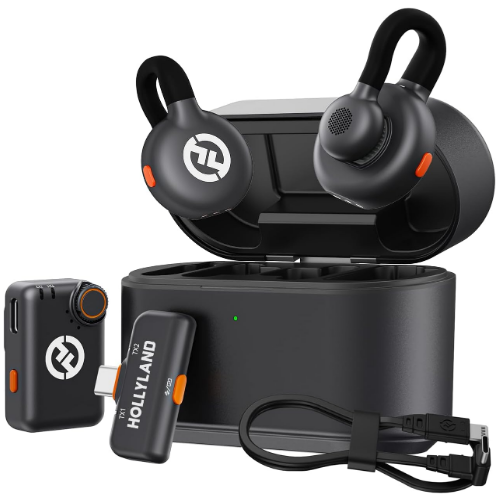
Hollyland LARK M2S – Wireless Clip-on Microphone
- 7g Lightweight, Titanium Clip, Discreet Design
- Clear sound with 24-bit/48kHz, 70dB SNR, 116dB SPL
- Noise Cancellation & 300m Long-Range Stability
- Works with Camera/iPhone/Android/Laptop
- Perfect for Content Creators, Online-Teaching, Streaming
$139
$159
FAQs:
- What features are important in a microphone for dictation?
Key features to look for include clear audio capture, noise cancellation, comfortable design for long dictation sessions, and compatibility with your preferred dictation software. - Do I need a separate microphone, or is a built-in laptop mic sufficient for dictation?
While built-in laptop microphones can work for basic tasks, a dedicated external microphone usually offers better sound quality, filtering of background noise, and overall improved dictation accuracy. - Can I use a gaming headset for dictation?
Yes, many gaming headsets come with good quality microphones and can be suitable for dictation. However, a specialized dictation microphone may still provide better clarity and noise reduction for professional use.































.png)




